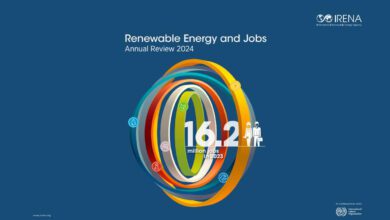ICRA continues to maintain negative outlook for the domestic mining and construction equipment (MCE) sector based on the prevailing overall scenario. After three strong years and the industry volumes peaking at about 94,000 units, CY2019 saw the industry volumes fall by 16%. Plagued by tight liquidity conditions, delayed payment to contractors and an overall slowdown in Government spend on infrastructure activity, MCE volume have witnessed a sharp contraction since December’18. Partial recovery was visible from December’19 with some relief on payments and Government spending, however, the lockdown from March ’20, disrupted this growth momentum.
As per an ICRA note, during Q1 CY2020, the industry reported over 23% volume decline, with volumes in March’20 falling by ~50%. The same continued to contract in April and May’20 too before reporting a surprising pick-up in June 20. Given this situation, the MCE industry is expected to suffer a volume decline of over 20% in CY2020, due to two months of lost sales and an overall weakness in the economy.
CE demand typically is strongly correlated to economic activity and government (and private) Investments in infrastructure and other long-term fixed assets. In the current context, GDP growth has slid to a 44-quarter low of 3.1% in Q4 FY2020 with onset of lockdown. Domestic steel consumption and cement production has witnessed de-growth at -7% and -5% respectively. The contraction in Gross Fixed Capital Formation (GFCF) in the economy has worsened to series low 6.5% in Q4 FY2020. With no let-up in COVID-19 outbreak, climbing infections and localized lockdowns, recovery will be delayed. Thus, there exists significant negative bias to current forecasts.
Strong economic growth and infrastructural activity (during FY2017 to FY2019) had triggered buying in the MCE industry during CY2015-18; the volumes grew at a 3-year CAGR of 27% during this period while the GFCF too expanded by 6.5-10% annually (FY16-FY19). GFCF contracted in the Q2 and Q3 FY2020 for the first time in more than 4-years due to reduced infrastructure activity coupled with moderation in exports and private consumption growth – all of which dragged GDP performance in Q4 FY2020. While Q4 FY2020 was impacted by the pandemic outbreak, economic activity and demand for CE had started contracting way back in December’18, triggered by the infra slowdown in Q4 FY2019, in the run-up to the elections.
Within the infrastructure segment, the biggest demand driver for CE over the past several years has been road activity – both for state roads and national highways. The pace of new project awards (under both NHAI and MORTH) have been relatively weak in the last two years due to factors like high land cost, general elections, legal hurdles impacting land acquisition and funding constraints. This pipeline of awards, going into FY2021 was already leading to a pre-COVID muted outlook for CE demand in CY2020. However, March 2020 and the subsequent two months, of April and May 20, witnessed a surge in road project awards. Execution understandably fell sharply during the COVID lockdown; revival in execution needs to be watched in the coming months.
The COVID outbreak has widened state governments’ revenue deficits leading to narrowed headroom for capital expenditure. State-led capex accounts for over half of total Government capital expenditure in the country. Over the last three years, state-capex spend grew by 16% with the top-5 states – UP, Maharashtra, Karnataka, Tamil Nadu and Gujarat accounting for 43% of total State capex. These include irrigation, roads, metros and drinking water supply projects which are focus areas for State Governments.
Amidst considerable volatility in growth trends in the first three quarters of FY2020, the pace of YoY decline in the capital outlay of 20 state governments, for which the data is available, worsened and doubled to 12.0% in Q4 FY2020 from 6.0% in Q3 FY2020. This contrasted with the healthy expansion in FY2019 and the impact of this slowdown was reflected in the ~23% contraction in sales of equipment during FY2020. In the current scenario, revenues of both the Central and the state governments have been impacted resulting in reduced government expenditure. While Central Government projects could continue with its implementing agencies, the Central Public Sector Enterprises (CPSEs) borrowing (to fund the expenditure), to budget for the sharp reduction in revenue receipts during FY2021 and the limited flexibility to prune revenue expenditure and increase borrowings, many state governments may have to resort to cut or defer capital expenditure.













